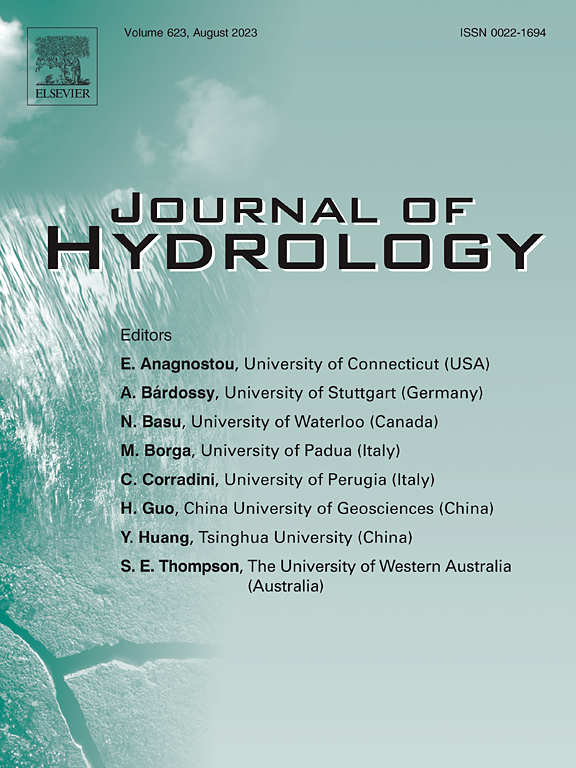岩溶储层中与深度有关的同位素动态:法国洞穴的十年监测洞察力
IF 5.9
1区 地球科学
Q1 ENGINEERING, CIVIL
引用次数: 0
摘要
本文章由计算机程序翻译,如有差异,请以英文原文为准。
Depth-Dependent isotope dynamics in karst reservoirs: Multi-Decadal monitoring insights from French caves
Understanding the stable oxygen isotope (δ18O/δD) compositions in rainwater and cave drip water within karst systems is essential for past climatic reconstructions all over the world. However, the relationship between cave drip water isotopes and upper karst infiltrated water and reservoirs remains unclear. Over twenty years, we monitored eight caves in France, from North to South: Arcy-sur-Cure, Villars, Cussac, Pech-Merle, Chauvet, Orgnac, Niaux, and Clamouse, collecting 3,000 dripping water samples from 32 drip points to measure δ18O and δD isotopes. As already observed in many cave sites, the isotopic composition of drip waters shows temporal stability with a Coefficient of Variation (CV) below 7 %, suggesting effective rainfall mixing during infiltration period. However, putting all these data on cave vertical cross sections, we observed subtle decreasing gradients in the averaged dripping δ18O values. For the first time in a multi-cave study, a clear logarithmic decrease of δ18O and δD with depth is found. Deeper sites show more negative isotopic values, especially in shallower zones (<50 m). In order to better understand these gradients, we used the hydrologic KarstFor model which revealed the importance of overflow mechanisms and of evapotranspiration (ETP) in driving this depth-dependent isotopic effect. These findings emphasize the significance of incorporating depth-dependent reservoir dynamics when analyzing isotopes in cave environments, advocating for a nuanced understanding of karst hydrological processes in affecting stalagmite δ18O.
求助全文
通过发布文献求助,成功后即可免费获取论文全文。
去求助
来源期刊

Journal of Hydrology
地学-地球科学综合
CiteScore
11.00
自引率
12.50%
发文量
1309
审稿时长
7.5 months
期刊介绍:
The Journal of Hydrology publishes original research papers and comprehensive reviews in all the subfields of the hydrological sciences including water based management and policy issues that impact on economics and society. These comprise, but are not limited to the physical, chemical, biogeochemical, stochastic and systems aspects of surface and groundwater hydrology, hydrometeorology and hydrogeology. Relevant topics incorporating the insights and methodologies of disciplines such as climatology, water resource systems, hydraulics, agrohydrology, geomorphology, soil science, instrumentation and remote sensing, civil and environmental engineering are included. Social science perspectives on hydrological problems such as resource and ecological economics, environmental sociology, psychology and behavioural science, management and policy analysis are also invited. Multi-and interdisciplinary analyses of hydrological problems are within scope. The science published in the Journal of Hydrology is relevant to catchment scales rather than exclusively to a local scale or site.
 求助内容:
求助内容: 应助结果提醒方式:
应助结果提醒方式:


